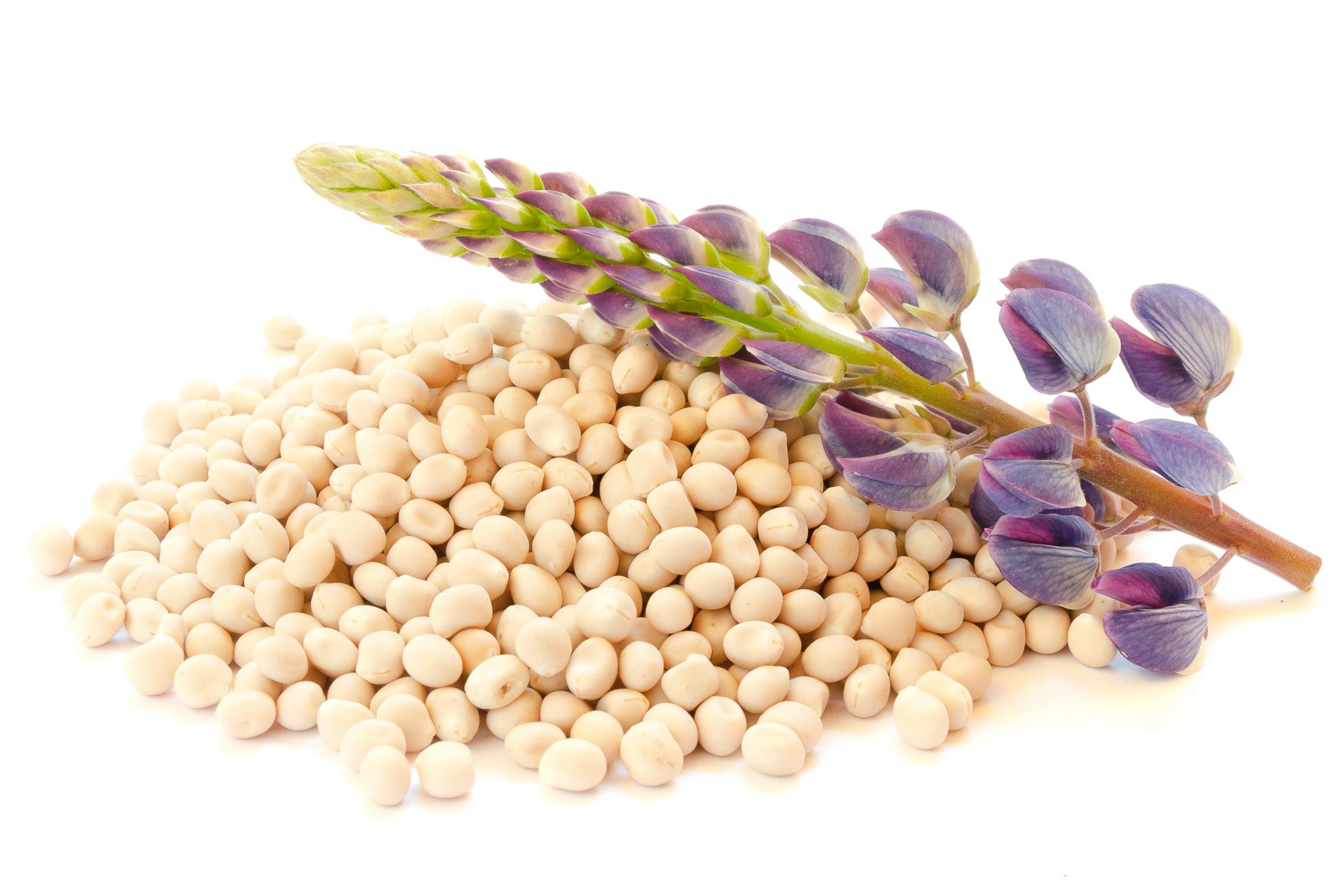Faba beans and lupin have great potential to be cultivated in the UK but, as a general rule they are currently underutilised and overlooked crops. The proteins of these crops show beneficial characteristics but are influenced by both the growing conditions and subsequent processing methods.
Protein databases suggest that substantial research is still needed to sequence and characterise the proteome (entire set of proteins) of these two crops, which will in turn help to analyse and exploit their potential (See Table 1, below). It is vital that growers and food product developers work together to meet expectations for these legumes, while also taking into account both their sustainability and positive environmental impact.

Table 1
Faba beans
Faba beans (Vicia faba also known as Fava or broad beans) contain 20-40% proteins, 10-15% dietary fibre and 2-4% fat. They are rich in dietary fibre, vitamins (folic acid, niacin, vitamin C) as well as in Zinc and Iron.
Faba bean protein extract can contain as much as 90% protein – higher than pea protein extract – of which 80% is enzymatically inactive storage protein. Storage proteins are nutrient reservoirs for metals such as iron, and for amino acids and nitrogen, which means they are available for the seed at germination as well as for the consumers at consumption. Faba bean proteins have a typical legume-like amino acid composition, similar to pea proteins.
Faba beans, or their extracted proteins, are used in a variety of food products thanks to their superior functional properties as emulsifier, foaming and gelling agents. The taste profile is a rather mild pulse taste: sweet and tender. The range of potential applications are growing but the most common uses are dairy alternatives, meat replacements, bakery products, snacks, and nutritional powders.
Global production has almost doubled over the past two decades, and a 2-4% compound annual growth rate (CAGR) is projected for the next five years, reaching $3.5bn globally. Production in the UK is the third largest in the world, after China and Ethiopia. Currently the crop is mainly exported or used for livestock. The value of the faba bean market in the UK is dependent on animal feed prices, but is in the range of £100m+, higher if uptake for food production is included.
Lupin
Lupin (Lupinus) seeds contain 30-40% proteins, which is on a par with soy, 19% dietary fibre and 5-15% fat. Lupin is the lowest calorie legume and is rich in vitamins (folate, thiamine, niacin), calcium, manganese, and copper.
Lupin proteins contain high levels of lysin, leucin and arginine and lack methionine and cystine. Lupin protein isolates have weak functional properties, which are usually improved by protein modifications, making it possible to use this high-value nutritional, low calorie and high protein (90%+ pure) material as a functional food ingredient or nutraceutical. Lupin seeds taste bitter, nutty and astringent, but these qualities are masked when the protein isolate is produced, resulting a neutral taste ingredient for food applications. The most common use of lupin protein isolates is gluten-free products, meat, milk and egg replacements, nutraceuticals, sports nutrition and also pet food and animal feed.
Although Europe is the second-largest grower of lupins, with 18% of global production, it is a long way behind Asia-Pacific (75%). The global lupin protein market is forecasted to rise at a CAGR of 5.4% between 2020 and 2030 according to FMI.
Opportunities for UK growers
Legumes are underutilised crops in the UK for plant protein production, which provides an opportunity for growers and food manufacturers to tackle the food security challenge. The nutrient quality of proteins from pulses are generally beneficial for the human diet, as well as for animal feed or pet food. The functional properties of these proteins vary and although their suitability in a wide range of applications has already been proven, there is still plenty of scope for future innovations.
Growing legumes using regenerative agricultural practices, including intercropping and cover cropping, can significantly contribute to low food miles, zero waste and enhanced food and feed quality. Although legumes are not currently grown in controlled environments such as vertical farms or glasshouses, looking towards disease prevention and reduced land use, there is a potential for this in the future.
Working closely with the food and feed industry and growing plants according to the demand for food and feed production is key and requires good interconnectivity between the sectors.
CHAP is well placed to accelerate such collaborations and is looking to scope an increasing number of projects that link innovative crop production with direct applications for specific food product developments.
If you missed the previous two blogs on this subject, go to Legume Proteins and More than Peas. For more on CHAP’s work in this area, go to Seeking Future Proteins.
If you are interested in working with CHAP in the area of alternative proteins, or want to discuss a specific project idea, please send us an email using the enquiries form at the bottom of our homepage.
Please note, the opinions expressed in this article are the author’s own and do not necessarily reflect the views or opinions of CHAP.













